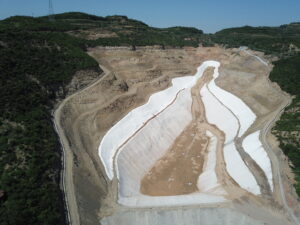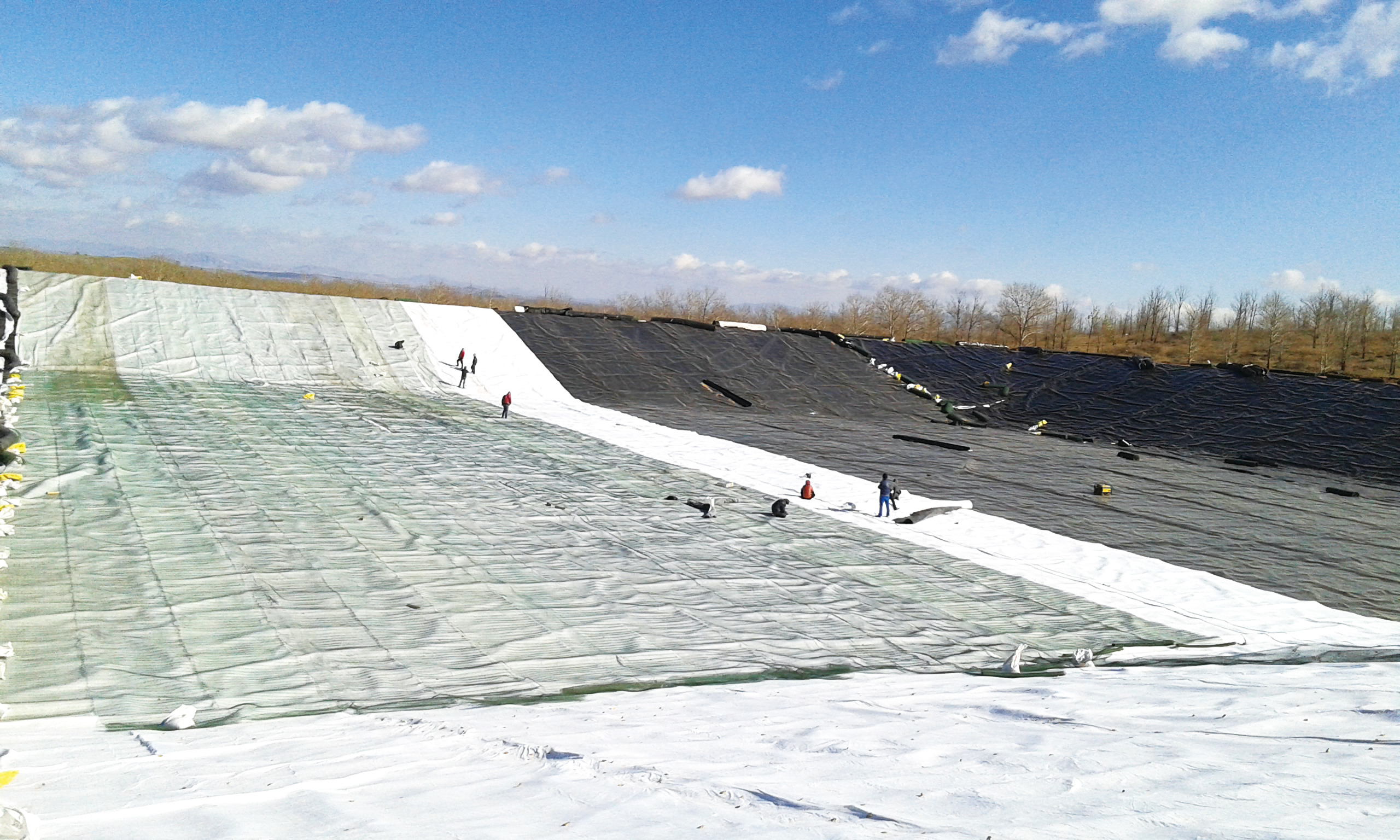Is the anti-seepage effect of filament geotextile better?
Filament geotextiles generally have better anti-seepage effects than short-filament geotextiles, but the specific effects also need to consider the specific application scenarios and needs.
Filament geotextiles are composed of continuous filaments and have high tensile strength and tear resistance. Their fibers are longer and continuous, helping to provide greater physical properties and mechanical strength.
This enables filament geotextiles to provide better results in terms of anti-seepage performance, load-bearing capacity and chemical resistance.
Filament geotextiles also have the following advantages:
Resistance to penetration: Due to the high strength and smaller pores of filament geotextile, it is better able to resist penetration and prevent the penetration of moisture or other fluids.
Resistant to stretch and tear: The high tensile strength and tear resistance of filament geotextile enables it to withstand greater stress and pull, thus providing better tensile and tear resistance.
Long-term stability: Filament geotextile has good anti-aging and weather resistance properties, and can maintain stability and performance in long-term use.
However, filament geotextiles also have some potential disadvantages compared to short-filament geotextiles:
Cost: Because filament geotextiles have higher physical properties and mechanical strength, their manufacturing costs are generally higher.
Installation complexity: Due to the higher strength and rigidity of filament geotextile, its installation may require more construction techniques and special equipment.
Therefore, when selecting geotextiles, specific application scenarios, engineering requirements, and budget constraints need to be comprehensively considered. Engineers or designers should comprehensively consider various factors based on the actual situation and select the most suitable type of geotextile to obtain the best anti-seepage effect.
What is the general lifespan of geotextiles?
The lifespan of geotextiles will be affected by a variety of factors, such as material quality, environmental conditions, usage and maintenance. Therefore, it is impossible to give an exact life prediction, but the following factors may have an important impact on the life of geotextiles:
Material Quality: The material quality of a geotextile is one of the key factors in its longevity. High-quality geotextiles generally have better resistance to weathering, UV radiation, and chemical attack, so they may last longer.
Environmental conditions: The environmental conditions in which geotextiles are located have a significant impact on their lifespan. For example, geotextiles exposed to extreme climatic conditions (e.g., high temperatures, low temperatures, UV radiation) or corrosive chemicals may age and fail faster.
How it is used and the load it is subjected to: How the geotextile is used and the load it is subjected to will also affect its lifespan. If geotextiles are used in load-bearing applications, such as soil reinforcement or impermeability layers in civil engineering, their lifespan may be put to a greater test. Proper design, correct installation and maintenance can extend the life of geotextiles.
Maintenance and upkeep: Regular maintenance and upkeep is essential to extend the life of your geotextile. For example, cleaning and drainage to avoid surface accumulation, regular inspections and maintenance, etc. can help extend the service life of geotextiles.
Overall, the lifespan of geotextiles typically ranges from a few years to decades and can vary depending on the specific application and conditions. To ensure optimal longevity and performance of geotextiles, manufacturer recommendations and guidelines should be consulted and proper practices followed during installation and maintenance.

What construction projects require geotextiles?
Geotextiles are widely used in various engineering projects. Here are some common construction projects that may require the use of geotextiles:
Road and railway engineering: Geotextiles can be used as reinforcement and anti-seepage layers for road and railway base layers to prevent soil settlement and penetration and improve the stability and durability of the foundation.
Water conservancy projects: Geotextiles can be used in dams, channels, river embankments and coastal protection projects to resist erosion, prevent seepage and enhance structural stability.
Foundation engineering: Geotextiles can be used to reinforce and layer foundations to prevent soil settlement, differential settlement and cracks.
Civil engineering: including soil erosion control, soil slope stabilization, exposed soil protection in earthworks, etc.
Environmental engineering: used as anti-seepage layer in landfills, soil protection and pollutant barrier in environmental remediation projects.
Hydrological engineering: such as wetland restoration, peatland protection and sediment control in lakes, rivers and estuaries.
In addition to the above-mentioned projects, geotextiles can also be used in landscaping, mine reclamation, agriculture, greenhouse cultivation and other fields.
Its application range is very wide, as it can provide various functions such as anti-seepage, reinforcement, filtration and soil protection, helping to improve the stability of engineering structures, extend their service life and reduce environmental impact.
Whether geotextiles are needed in a specific project needs to be determined based on the engineering design, environmental characteristics and specific requirements.
When selecting and using geotextiles, relevant factors such as engineering requirements, geological conditions, soil properties, etc. should be taken into consideration, and applicable standards and specifications should be followed.
Author
-

Founded in 2002, Tinhy's team focuses on the manufacturing, marketing, installation, application and research and development of geosynthetic materials.
View all posts




